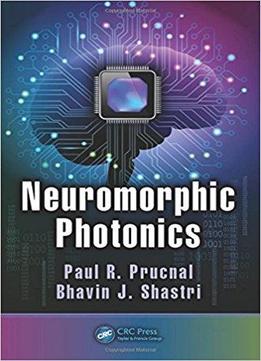
Neuromorphic Photonics
by Paul R. Prucnal /
2017 / English / PDF
439.8 MB Download
As society’s appetite for information continues to grow, so does our need to process this information with increasing speed and versatility. Conventional one-size-fits-all solutions offered by digital electronics can no longer satisfy this need, as Moore’s law, interconnection density, and the von Neumann architecture reach their limits. These limitations are already being felt in advanced applications such as cognitive radio, adaptive control, and scientific computing. With its superior speed and reconfigurability, analog photonics can provide some relief to these problems; however, complex applications of analog photonics have remained largely unexplored due to the absence of a robust photonic integration industry. Recently, the landscape for commercially-manufacturable photonic chips has been changing rapidly and now promises to achieve economies of scale previously enjoyed solely by microelectronics.
Despite the advent of commercially-viable photonic integration platforms, significant challenges still remain before scalable analog photonic processors can be realized. A central challenge is the development of mathematical bridges linking photonic device physics to models of complex analog information processing. Among such models, those of neural networks are perhaps the most widely studied and used by engineering communities.
This book sets out to build bridges between the domains of photonic device physics and neural networks, providing a comprehensive overview of the emerging field of "neuromorphic photonics." It includes a thorough discussion of evolution of neuromorphic photonics from the advent of fiber-optic neurons to today’s state-of-the-art integrated laser neurons, which are a current focus of international research. Neuromorphic Photonics explores candidate interconnection architectures and devices for integrated neuromorphic networks, along with key functionality such as learning. It is written at a level accessible to graduate students, while also intending to serve as a comprehensive reference for experts in the field.











